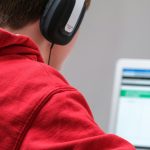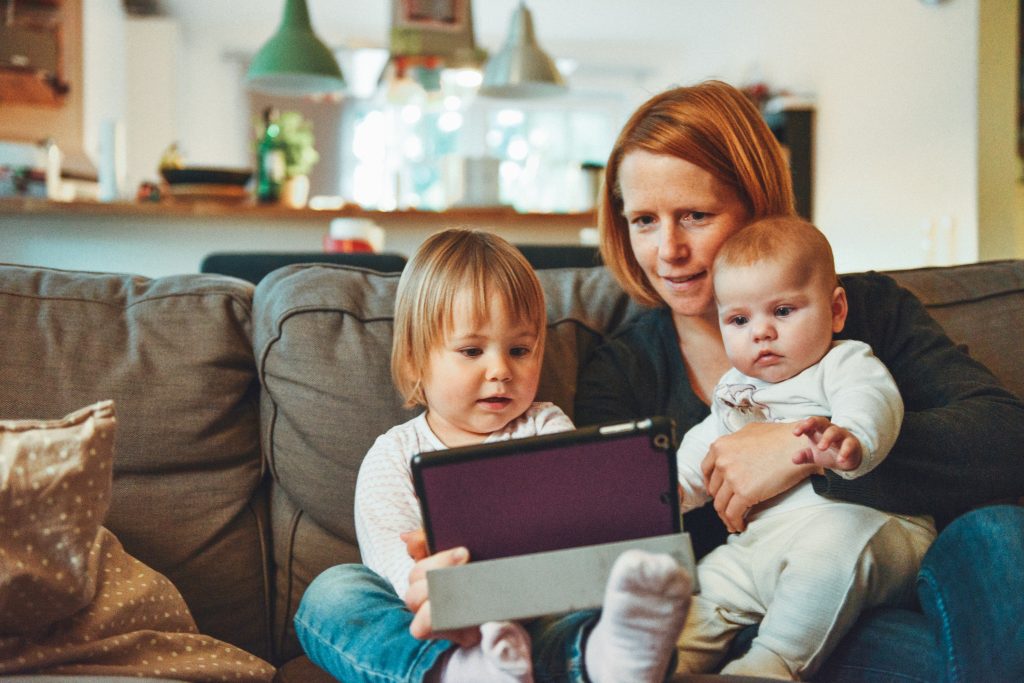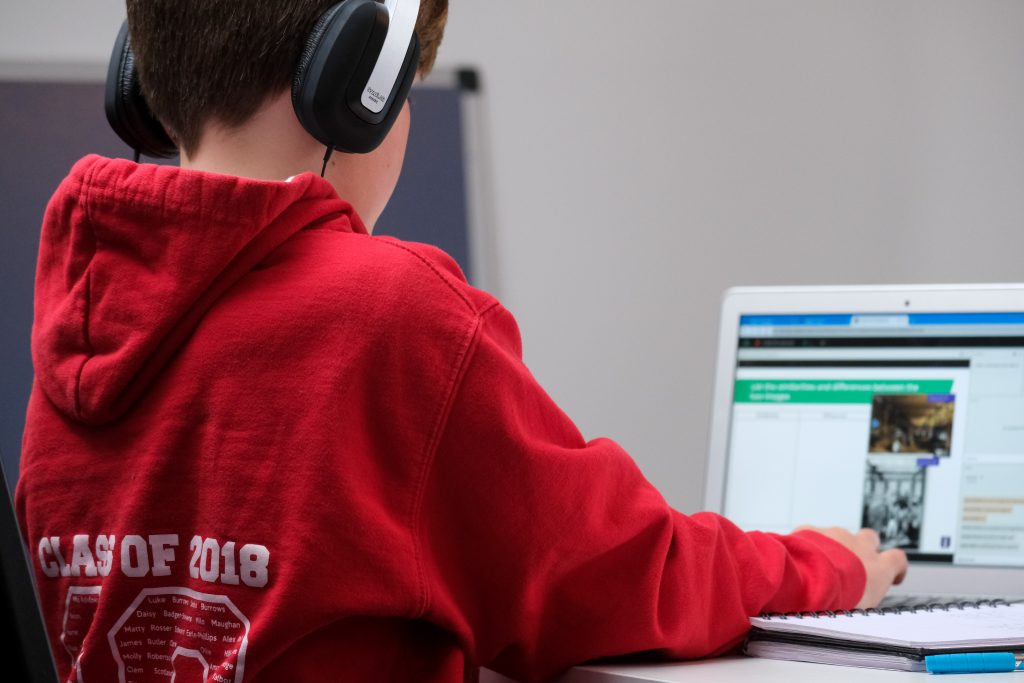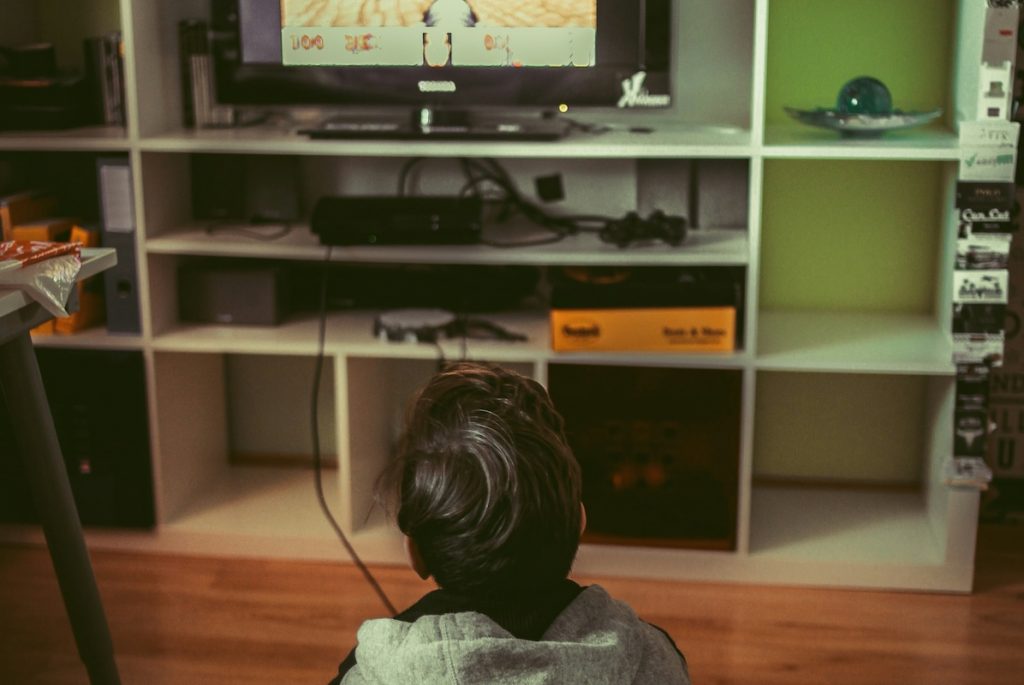
By age 12, ownership of mobile phones amongst young people is “near universal”, with many 5-18 year olds also having access to a TV (97%), games console (77%), tablet computer (74%) or laptop (67%) (Ofcom, 2023). Very high numbers of young people therefore have access to digital technologies and regularly use them for different purposes (Ofcom, 2023).
Previous research has reported mixed findings regarding the impact of frequent digital use on adolescents’ socioemotional wellbeing (e.g., Berryman et al., 2018; Kelly et al., 2018) and academic development (May & Elder, 2018). Across socioeconomic groups, research also suggests that parents of higher socioeconomic status (SES) provide richer access and support around digital technology (Hargittai & Hinnant, 2008; Hatlevik et al., 2015).
However, there are still gaps in our understanding – for instance, knowing how digital use affects outcomes over time could uncover important patterns across development. In addition, socioeconomic status (SES) has been somewhat overlooked as a moderator between digital use, academic performance and wellbeing. Bohnert and Gracia (2023) aimed to address these gaps by using longitudinal data.

We know that many young people have access to digital technology, which can have positive and negative effects. However, less is known about the impact of digital technology on academic and wellbeing outcomes across adolescence, particularly for those from more deprived backgrounds.
Methods
The authors utilised the Growing Up in Ireland (GUI) study, following a 1998 birth cohort at ages 9, 13 and 17/18 to gather data about the child, parents, and household – including information on digital engagement and outcomes. Perfect!
At each age, fluctuations in screen time, activity (e.g., social media, learning, gaming), and socioeconomic status were compared to outcomes in socio-emotional wellbeing (internalising/externalising difficulties, prosociality) and academic performance (English and Maths). Potential confounding variables were controlled for.
Longitudinal data was analysed using fixed-effects regression models to explore associations between digital engagement, wellbeing, and academic outcomes over time.
Results
The final sample included 7,685 participants, with 51% identifying as male and 51.7% identifying as low socioeconomic status (SES). Analyses of the data provided three main contributions to the literature:
1. Summary of how digital engagement and outcomes evolve across adolescence by socioeconomic status (SES)
- Digital time:
- Screen time increased over adolescence, more so for low SES individuals.
- Differences between SES groups widened over time from age 13.
- Digital activity:
- Social media use increased from 41% (age 9), to 91% (age 13), to 99% (age 17-18).
- Gaming decreased from 86% (age 9) to 37% (17/18).
- Learning activities increased from 73% (age 9) to 98% (17/18).
- Few differences found across SES groups, although high-SES adolescents were more likely to engage in learning activities (ages 9 and 13).
- Academic and socioemotional outcomes:
- Prosocial functioning and academic performance were stable over time.
- Internalising difficulties decreased whilst externalising problems increased from ages 13 to 17/18.
2. Associations between digital use and outcomes throughout adolescence
- Digital time:
- Across adolescence, heavy daily screen time (3+ hours) was associated with decreases in wellbeing and increased socioemotional difficulties (B = .019, p < .001), particularly externalising behaviours (B = .026, p < .001) and prosocial functioning (B = -.022, p < .001), but not internalising difficulties.
- Digital activity:
- Learning-oriented activities were associated with increased prosocial functioning (B = .015, p < .001), and (understandably) Maths (B = .014, p < .001) and English performance (B = .011, p < .01).
- Gaming was surprisingly associated with increased academic performance (B = .008, p < .01, B = .006, p < .05) alongside decreased socioemotional difficulties (B = −.005; p < .05).
3, How longitudinal associations between digital use and outcomes differs across SES
- Low-SES:
- Increased digital time negatively affected wellbeing (B = .016, p < .01, B = .027; p < .001, B = .035; p < .001), internalising (B = .019, p < .05), and externalising difficulties (B = .022, p < .001, B = .029; p < .001, B = .050; p < .001).
- Educational activities were not positively associated with improvements in English and Maths.
- High-SES:
- Only heavy digital time was associated with socioemotional difficulties (B = .017; p < .05)
- Learning-oriented activities were positively associated with academic performance (B = .012, p < .05, B = .014; p < .001) and prosocial functioning (B = .012, p < .05).

Findings indicate that increased digital activity among adolescents from low socioeconomic backgrounds is associated with decreased wellbeing and increased internalising and externalising difficulties.
Conclusions
This study was the first longitudinal analysis to explore the importance of socioeconomic status (SES) in how digital use affects socioemotional and academic outcomes across adolescence, emphasising “quantity and quality of digital engagement being key to understanding variations”.
Across adolescence, heavy daily screen time was associated with declines in wellbeing. Conversely, certain activities benefitted academic performance.
Effects varied across SES where digital engagement was associated with socioeconomic inequalities in adolescents’ wellbeing and educational outcomes. Low-SES adolescents were generally more harmed by digital engagement, while adolescents from privileged backgrounds could avoid risks better and maximise benefits on positive outcomes like academic performance.

Socioeconomic divides, in turn, reinforce digital divides in society, where those of higher economic backgrounds have the privilege of minimal risk and maximum reward.
Strengths and limitations
The novel approach of this research strengthens previous findings whilst providing valuable, unique evidence around digital technology, SES, and longitudinal outcomes. For example, although screen time differences are established between SES groups, this study uniquely contributes when this emerges.
However, it is important to be mindful of several limitations:
- The Growing Up in Ireland (GUI) cohort lacks generalisability to other contexts. The exclusively Irish participants were born before the advent of the smartphone, and before the “phenomenal innovation” of the 2010’s (Global X). The digital landscape is ever accelerating, and a lot has likely changed in how adolescents engage with digital technologies since the study began.
- Methodological drawbacks also relate to potentially imprecise and unreliable measures of screen time and activity via parental reports or estimates. Categorisations of SES also seemed vague, with sample sizes being too small to distinguish sub-groups. These issues risk undermining the results by omitting other nuances/key variables in this relationship.
- The primary limitation of this research is the risk it poses to misattributing causal mechanisms behind these findings. Although longitudinal data provides “more substantive conclusions” than data from a single time point, it cannot always uncover directionality which I believe this research risks erroneously suggesting. For example, although heavy screen time was found to be associated with lower wellbeing, we cannot guarantee that screen time causes declines in wellbeing. Those with lower socioemotional wellbeing outcomes, for whatever reason, may actually be using digital technologies more frequently as a coping strategy. Likewise, we cannot definitively say that adolescents have increased screen time as they age: findings may alternatively just be indicative of how digital technology and online access has proliferated over time for young people of all ages.
- This research does not provide evidence around the mechanisms driving these relationships, interpreting the findings as such should be done with caution.

Warning! Unique longitudinal findings should be interpreted with caution. We cannot conclude directional causes of this relationship, and methodological drawbacks should be noted.
Implications for practice
Firstly, future research is encouraged to address the shortcomings of this study, with a particular focus on uncovering causal mechanisms in this relationship and disentangling “the complex interplay between social inequality and digital processes” for adolescents’ wellbeing.
Young people and parents should be aware of potential risks to wellbeing from frequent screen time, and that quantity of digital use was more influential than content or activity type. Support should be provided for young people in these respects, particularly to those of lower SES backgrounds who are at increased risk from digital engagement and less able to capitalise on the benefits.
Digital use was found to have some positive effects, particularly learning-oriented activities benefitting academic performance. This is good news for me after using a revision app to hopefully pass my driving theory test! Parents should be made aware of this, and young people should be supported to engage in such activities through guidance and provision of access. Although, the “goldilocks level of digital use” may vary according to SES contexts so should be carefully considered in these efforts.
Furthermore, those of a lower SES were found to less frequently use digital technology for learning activities and even when they did, were less able to access the academic or socioemotional benefits. Other studies have found parents of higher SES provide richer access and support around digital technology (Hargittai & Hinnant, 2008; Hatlevik et al., 2015). Those who are therefore unable to have this access in the home should be supported in other settings, such as at school.
Attention should also be paid to how gaming was associated with higher academic performance, alongside lower socioemotional difficulties, likely through social support, networking, and a reduction in loneliness (Berryman et al., 2018; Davis, 2012). This contributes to a growing body of important literature which finds evidence for the social, emotional, and academic benefits of gaming (Pine et al., 2020; Kowal et al., 2021), challenging frequent misconceptions from news articles and reports (BBC, 2018; Economic Times, 2023). The present study provides valuable longitudinal evidence to be considered in this debate.
Lastly, clinicians should use these findings when speaking to young people with socioemotional or mental health difficulties, asking questions about digital use, both time and activity, particularly if the young person is of low SES.

Young people, parents, and practitioners should understand the positive and negative impacts of digital engagement on various outcomes throughout adolescence. Particular attention should be paid to those from lower socioeconomic backgrounds.
Statement of interests
None to disclose.
Links
Primary paper
Bohnert, M., & Gracia, P. (2023). Digital use and socioeconomic inequalities in adolescent well‐being: Longitudinal evidence on socioemotional and educational outcomes. Journal of Adolescence.
Other references
Berryman, C., Ferguson, C. J., & Negy, C. (2018). Social media use and mental health among young adults. Psychiatric Quarterly, 89(2), 307–314.
Davis, K. (2012). Friendship 2.0: Adolescents’ experiences of belonging and self‐disclosure online. Journal of Adolescence, 35(6), 1527–1536.
Hargittai, E., & Hinnant, A. (2008). Digital inequality: Differences in young adults’ use of the Internet. Communication Research, 35(5), 602–621.
Hatlevik, O. E., Guðmundsdóttir, G. B., & Loi, M. (2015). Digital diversity among upper secondary students: A multilevel analysis of the relationship between cultural capital, self‐efficacy, strategic use of information and digital competence. Computers & Education, 81, 345–353.
Kelly, Y., Zilanawala, A., Booker, C., & Sacker, A. (2018). Social media use and adolescent mental health: Findings from the UK millennium cohort study. EClinicalMedicine, 6, 59–68.
Kowal, M., Conroy, E., Ramsbottom, N., Smithies, T., Toth, A., & Campbell, M. (2021). Gaming Your Mental Health: A Narrative Review on Mitigating Symptoms of Depression and Anxiety Using Commercial Video Games. JMIR Serious Games, 9(2), e26575.
May, K. E., & Elder, A. D. (2018). Efficient, helpful, or distracting? A literature review of media multitasking in relation to academic performance. International Journal of Educational Technology in Higher Education, 15(1), 13.
Ofcom. (2023, March 29). Children and Parents: Media Use and Attitudes.
Palandrani, P. (2020, February 10). A Decade of Change: How Tech Evolved in the 2010s and What’s In Store for the 2020s. Global X.
Pine, R., Fleming, T., McCallum, S,. & Sutcliffe, K. (2020). Anxiety, Depression, Stress, and Low Mood: A Systematic Review. Games for Health Journal, 9(4), 255-264.
Sing, P, K. (2023, July 25). How new-age gaming affects your child’s mental, physical and social well-being. The Economic Times.
Wakefield, J. (2018, January 2). Gaming addiction classified as disorder by WHO. BBC.
Photo credits
- Photo by Compare Fibre on Unsplash
- Photo by Alexander Dummer on Unsplash
- Photo by Compare Fibre on Unsplash
- Photo by Marvin Meyer on Unsplash
- Photo by Markus Spiske on Unsplash
- Photo by AR on Unsplash
